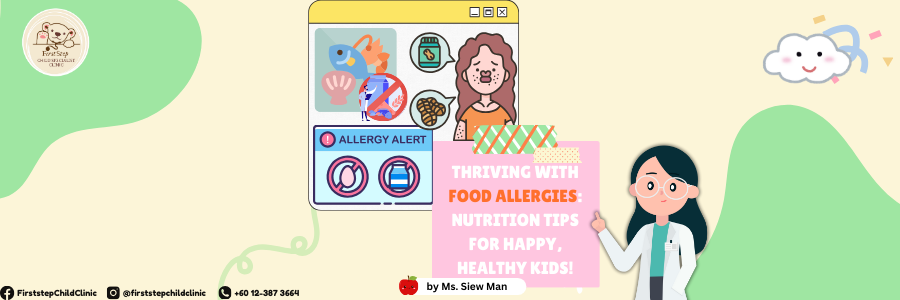
Thriving with Food Allergies
Thriving with Food Allergies: Nutrition Tips for Happy, Healthy Kids
Navigating food allergies can be a challenging journey for both parents and children, but with the right approach, kids can still thrive and enjoy a healthy, balanced diet. Allergies, whether they are caused by common foods like dairy, nuts, or gluten, don’t have to stand in the way of your child’s growth and happiness. By understanding their nutritional needs and learning how to make safe, delicious meal choices, you can ensure your little one gets all the essential nutrients they need for optimal development.
Creating Allergy-Safe Meal Plans for Kids
Managing food allergies can be overwhelming for parents, but with careful planning, children can still enjoy a nutritious, balanced diet. Here’s how to create allergy-safe meal plans for kids:
- Identify Safe Food Alternatives
- Swap common allergens (like dairy, eggs, or wheat) with safe alternatives. For example, use oat or almond milk for dairy allergies, and gluten-free grains for wheat allergies.
- Focus on Whole Foods
- Fresh fruits, vegetables, lean meats, and unprocessed grains are less likely to contain allergens. These foods also provide essential nutrients that help kids grow and thrive.
- Meal Prep and Plan Ahead
- Preparing meals in advance can help avoid last-minute decisions that may lead to unsafe food choices. You can batch-cook allergy-friendly meals and freeze portions for convenience.
- Consult with a Nutritionist
- A pediatric nutritionist can help ensure your child’s meal plan is well-balanced, providing the necessary vitamins and minerals while avoiding allergens.
- Involve Your Child in the Process
- Involve your child in meal planning and grocery shopping, allowing them to learn which foods are safe and build confidence in managing their allergies.
These steps help create nutritious, allergy-safe meal plans that cater to your child’s specific dietary needs.
How to Read Food Labels for Allergens
Reading food labels is essential for managing food allergies. Here’s a simple guide on how to do it:
- Check the “Contains” Statement
- Most packaged foods have a clear statement at the end of the ingredients list that says “Contains” followed by common allergens like milk, eggs, peanuts, soy, etc. Always start here.
- Read the Full Ingredient List
- Review all the ingredients to make sure the food doesn’t contain anything you or your child is allergic to. Sometimes allergens are listed under different names (e.g., casein for milk).
- Look for Cross-Contamination Warnings
- Some labels include warnings like “May contain traces of…” or “Processed in a facility that handles…” These are important if the food might have come into contact with allergens during manufacturing.
- Learn Alternative Names for Allergens
- Allergens can be listed under different names. For example, gluten might be listed as “wheat,” “barley,” or “rye,” while eggs might be called “albumin.” Know these terms to avoid hidden allergens.
- Double-Check for Hidden Ingredients
- Some ingredients, like artificial flavorings or colorings, might contain allergens, so it’s important to be cautious and research any unfamiliar ingredients.


